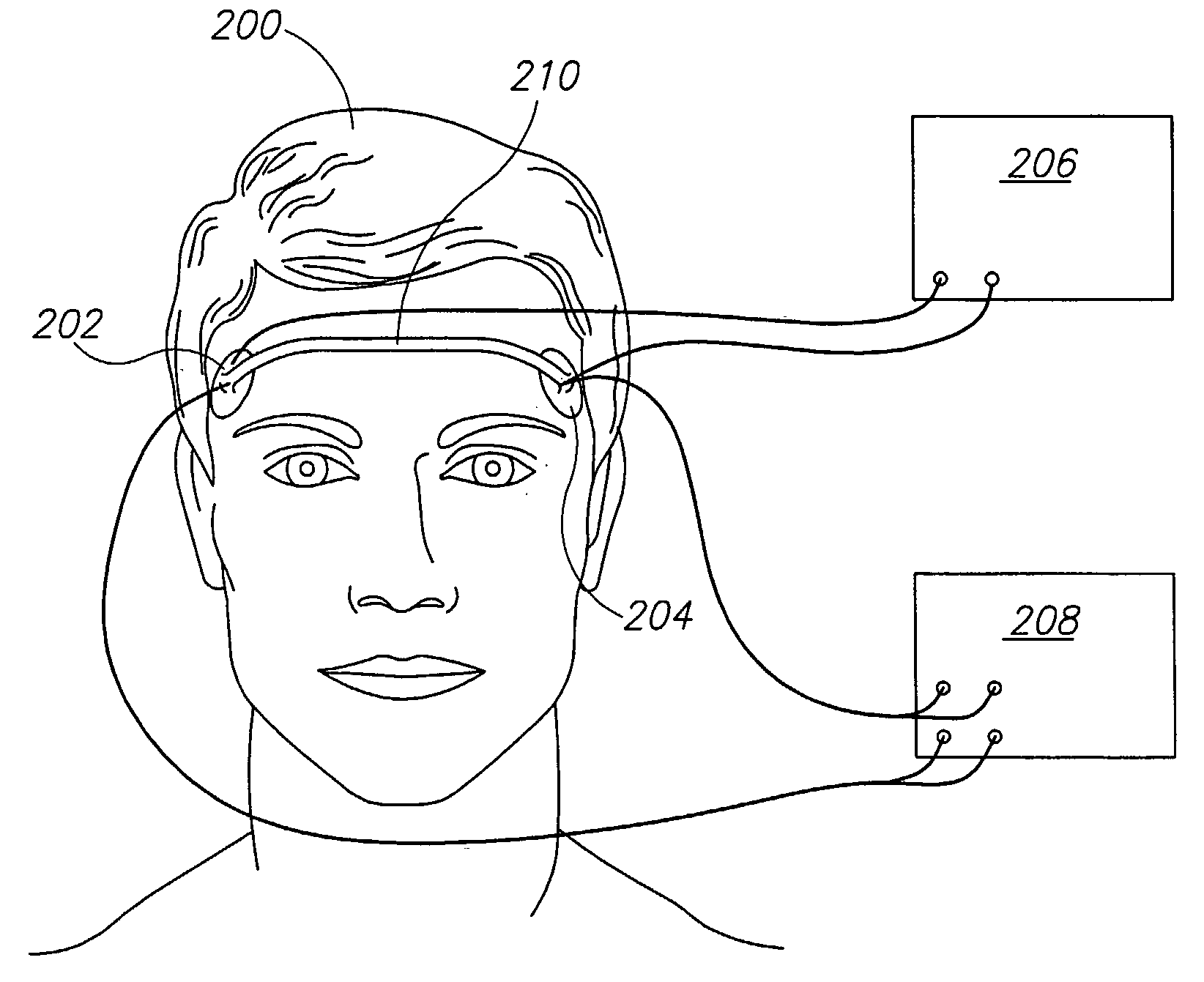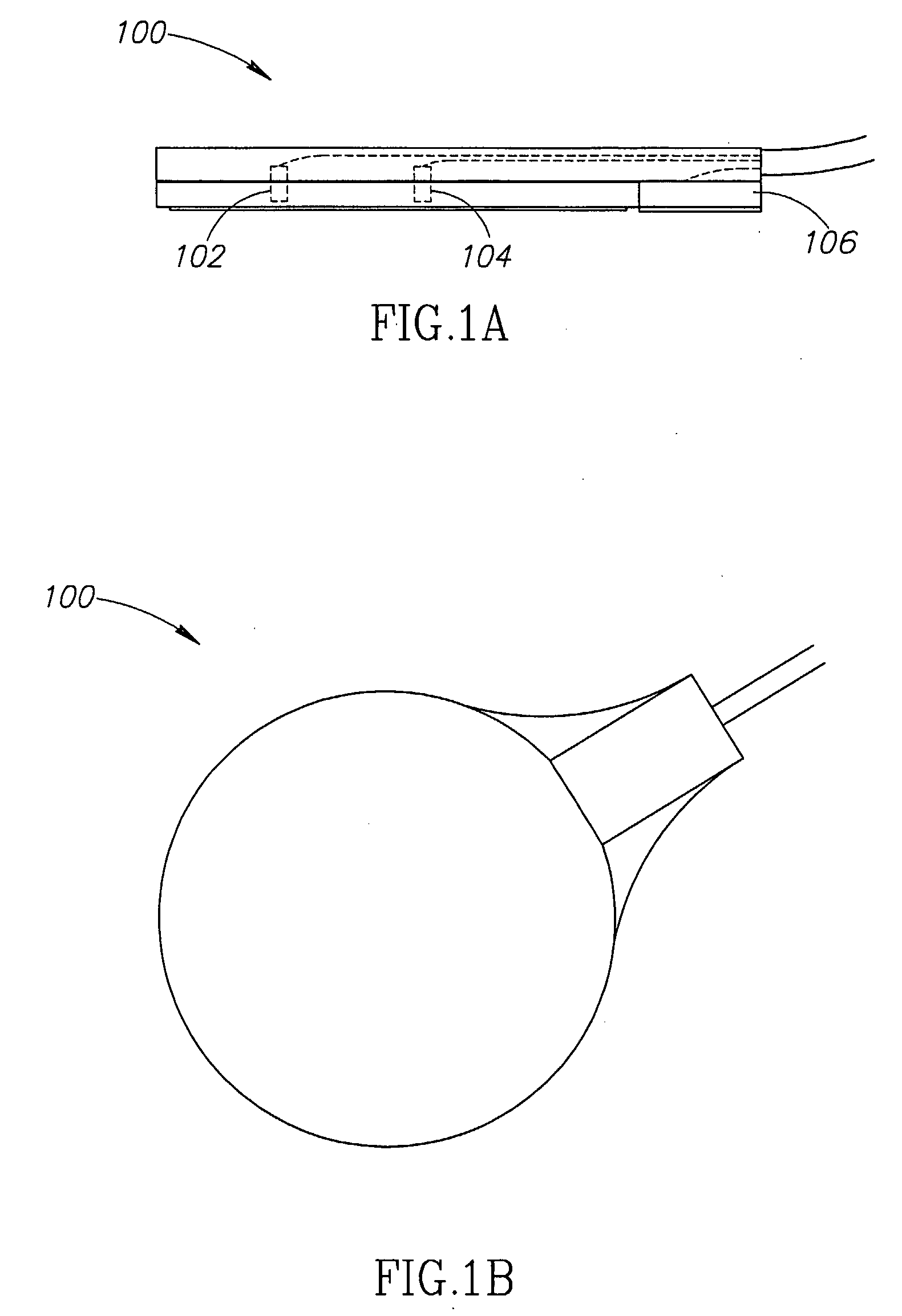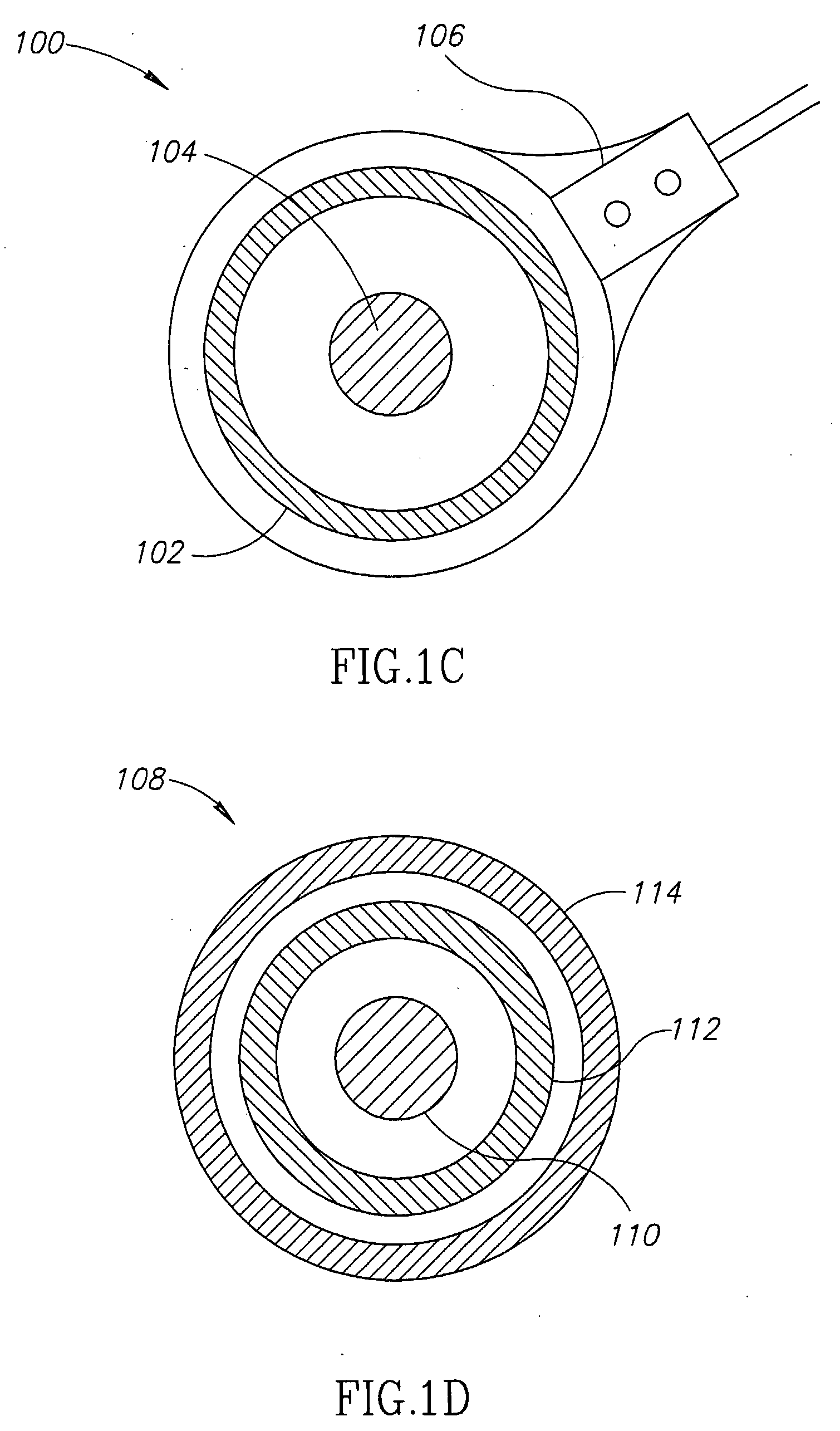Cerebral Perfusion Monitor
a perfusion monitor and cerebral technology, applied in the field of measuring blood flow in the head, can solve the problems of increased blood flow to the brain, brain cell death, brain cell damage, etc., and achieve the effect of poor ability to maintain constant blood flow, and rapid initial rise of ipg signal
- Summary
- Abstract
- Description
- Claims
- Application Information
AI Technical Summary
Benefits of technology
Problems solved by technology
Method used
Image
Examples
Embodiment Construction
[0066]FIGS. 1A, 1B, and 1C respectively show side, back, and face views of a unit 100 which optionally combines a current electrode 102 and a voltage electrode 104 for impedance plethysmography (IPG), and a sensor 106 for photoplethysmography (PPG), according to an exemplary embodiment of the invention. The face side of unit 100, shown in FIG. 1C, is the side that is placed against the skin, as shown in FIG. 2. As shown in FIG. 2, two such units, placed for example on opposite sides of the head, are optionally used for IPG, passing current from one unit to the other and measuring the voltage between them. For reasons described below, alternating current is generally used.
[0067]PPG sensor 106 measures the color of the skin to determine a degree of perfusion of oxygenated blood in the skin adjacent to unit 100, as described, for example, by J. Webster, “Measurement of Flow and Volume of Blood,” in John G. Webster (ed.), Medical Instrumentation: Application and Design (Wiley, 1997), th...
PUM
 Login to View More
Login to View More Abstract
Description
Claims
Application Information
 Login to View More
Login to View More - R&D
- Intellectual Property
- Life Sciences
- Materials
- Tech Scout
- Unparalleled Data Quality
- Higher Quality Content
- 60% Fewer Hallucinations
Browse by: Latest US Patents, China's latest patents, Technical Efficacy Thesaurus, Application Domain, Technology Topic, Popular Technical Reports.
© 2025 PatSnap. All rights reserved.Legal|Privacy policy|Modern Slavery Act Transparency Statement|Sitemap|About US| Contact US: help@patsnap.com



